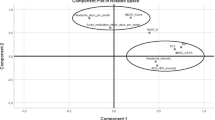Disability associated with headache cannot be fully accounted for by pain intensity and headache frequency. As such, a variety of cognitive and affective factors have been identified to help explain headache-related disability beyond that accounted for by pain levels. Pain-related anxiety, a multidimensional construct, also has been found to contribute to disability in headache sufferers. What is not known is whether pain-related anxiety is unique in contributing to disability beyond the role of headache-specific cognitive factors and emotional distress. The present study examines the influence of pain-related anxiety on disability, after controlling for pain, cognitive (self-efficacy and locus of control), and affective factors (emotional distress) in a sample of 96 primary headache sufferers. Pain, headache-related control beliefs, and emotional distress accounted for 32%, with locus of control related to health care professionals contributing unique variance. In the full model, with the addition of pain-related anxiety, only pain-related anxiety was a unique predictor of disability. These findings suggest that pain-related anxiety may have a unique and important role in contributing to disability in headache sufferers.
Similar content being viewed by others
REFERENCES
Arnstein, P., Caudill, M., Mandle, C. L., Norris, A., and Beasley, R. (1999). Self efficacy as a mediator of the relationship between pain intensity, disability and depression in chronic pain patients. Pain 80(3): 483–491.
Asmundson, G. J., Norton, P. J., and Veloso, F. (1999). Anxiety sensitivity and fear of pain in patients with recurring headaches. Behav. Res. Ther. 37(8): 703–713.
Barlow, D. H. (2001). Anxiety and Its Disorders: The Nature and Treatment of Anxiety and Panic (2nd ed.). New York: The Guilford Press.
Crombez, G., Vlaeyen, J. W., Heuts, P. H., and Lysens, R. (1999). Pain-related fear is more disabling than pain itself: Evidence on the role of pain-related fear in chronic back pain disability. Pain 80(1–2): 329–339.
French, D. J., Holroyd, K. A., Pinnell, C., Malinoski, P. T., O’Donnell, F. J., and Hill, K. R. (2000). Perceived self-efficacy and headache-related disability. Headache 40: 647–656.
International Headache Society Classification Committee. (1988). Classification and diagnostic criteria for headache disorders, cranial neuralgias and facial pain. Headache Classification Committee of the International Headache Society. Cephalalgia 8(Suppl. 7): 1–96.
Martin, N. J., Holroyd, K. A., and Penzien, D. B. (1990). The headache-specific locus of control scale: Adaptation to recurrent headaches. Headache 30(11): 729–734.
McCracken, L. M., Gross, R. T., Aikens, J., and Carnrike, C. L., Jr. (1996). The assessment of anxiety and fear in persons with chronic pain: A comparison of instruments. Behav. Res. Ther. 34(11–12): 927–933.
McCracken, L. M., Faber, S. D., et al. (1998). Pain-related anxiety predicts non-specific physical complaints in persons with chronic pain. Behav. Res. Ther. 36(6): 621–630.
McCracken, L. M., Zayfert, C., and Gross, R. T. (1992). The Pain Anxiety Symptoms Scale: Development and validation of a scale to measure fear of pain. Pain 50(1): 67–73.
McHorney, C. A., Ware, J. E., Lu, R., and Sherborne, C. D. (1994). The MOS 36-Item Short-Form Health Survey (S-F 36): III. Tests of data quality, scaling assumptions, and reliability across diverse patient groups. Med. Care 32(1): 40–66.
McHorney, C. A., Ware, J. E., and Raczek, A. (1993). The MOS 36-item Short-Form Health Survey (S-F 36): II. Psychometric and clinical tests of validity in measuring physical and mental health constructs. Med. Care 31(3): 247–263.
Norton, P. J. and Asmundson, G. J. (2004). Anxiety sensitivity, fear, and avoidance behavior in headache pain. Pain 111(1–2): 218–223.
Olesen, J., and Edvinsson, L. (1988). Basic Mechanisms of Headache. Elsevier, Amsterdam.
Stewart, A. L., Greenfield, S., Hays, R. D., Wells, K., Rogers, W. H., Berry, S. D., McGlynn, E. A., and Ware, J. E., Jr. (1989). Functional status and well-being of patients with chronic conditions. Results from the Medical Outcomes Study [published erratum appears in JAMA 1989 Nov. 10;262(18):2542]. JAMA 262(7): 907–913.
Stewart, W. F., Lipton, R. B., Dowson, A. J., and Sawyer, J. (2001). Development and testing of the Migraine Disability Assessment (MIDAS) Questionnaire to assess headache-related disability. Neurology 56(6): S20–28.
Stewart, W. F., Lipton, R. B., and Kolodner, K. (2003). Migraine disability assessment (MIDAS) score: Relation to headache frequency, pain intensity, and headache symptoms. Headache 43(3): 258–265.
Stewart, W. F., Lipton, R. B., Kolodner, K., Liberman, J., and Sawyer, J. (1999a). Reliability of the migraine disability assessment score in a population-based sample of headache sufferers. Cephalalgia 19(2): 107–114; discussion 174.
Stewart, W. F., Lipton, R. B., Kolodner, K., Sawyer, J., Lee, C., and Liberman, J. (2000). Validity of the Migraine Disability Assessment (MIDAS) score in comparison to a diary-based measure in a population sample of migraine sufferers. Pain 88: 41–52.
Stewart, W. F., Lipton, R. B., Whyte, J., Dowson, A., Kolodner, K., Liberman, J. N., and Sawyer, J. (1999b). An international study to assess reliability of the Migraine Disability Assessment (MIDAS) score [In Process Citation]. Neurology 53(5): 988–994.
Trask, P. C., Iezzi, T., and Kreeft, J. (2001). Comparison of headache parameters using headache type and emotional status. J. Psychosom. Res. 51(3): 529–536.
VandeCreek, L., and O’Donnell, F. (1992). Psychometric characteristics of the Headache-Specific Locus of Control Scale. Headache 32: 239–241.
Vlaeyen, J. W. and Linton, S. J. (2000). Fear-avoidance and its consequences in chronic musculoskeletal pain: A state of the art. Pain 85(3): 317–332.
Ware, J. E., Jr., and Hays, R. D. (1988). Methods for measuring patient satisfaction with specific medical encounters. Med Care 26(4): 393–402.
Ware, J. E., and Sherbourne, C. D. (1992). The MOS 36-item Short-Form Health Survey (SF-36). I. Conceptual frameworks and item selection. Med. Care 30: 473–483.
Author information
Authors and Affiliations
Corresponding author
Rights and permissions
About this article
Cite this article
Nash, J.M., Williams, D.M., Nicholson, R. et al. The Contribution of Pain-Related Anxiety to Disability from Headache. J Behav Med 29, 61–67 (2006). https://doi.org/10.1007/s10865-005-9033-4
Accepted:
Published:
Issue Date:
DOI: https://doi.org/10.1007/s10865-005-9033-4




